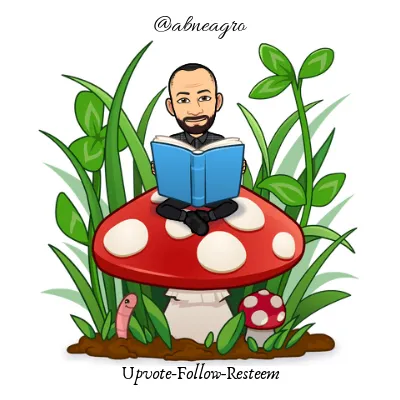Greetings dear friends of the Hive platform in general, welcome to my blog. Over here I will be sharing with you some photographs about the fascinating world of insects, so I invite you to enjoy the following publication.
Saludos queridos amigos de la plataforma Hive en general, bienvenidos a mi blog. Por aquí estaré compartiendo con ustedes algunas fotografías sobre el fascinante mundo de los insectos, así que los invito a disfrutar de la siguiente publicación.
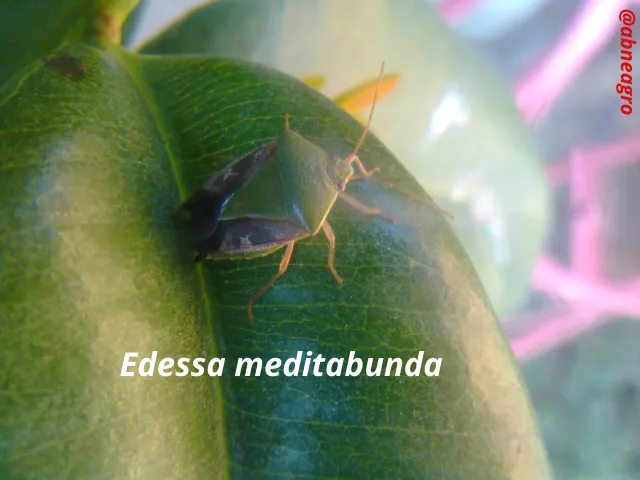
In nature every day we find a great diversity of arthropods that share our spaces in harmony, although often due to significant environmental imbalances, we can observe how numerous populations of many invertebrates get out of control and in the absence of their natural predators proliferate to the point of becoming pests.
En la naturaleza encontramos cada día una gran diversidad de artrópodos que comparten nuestros espacios en armonía, aunque a menudo, debido a importantes desequilibrios ambientales, podemos observar cómo numerosas poblaciones de muchos invertebrados se descontrolan y en ausencia de sus depredadores naturales proliferan hasta convertirse en plagas.
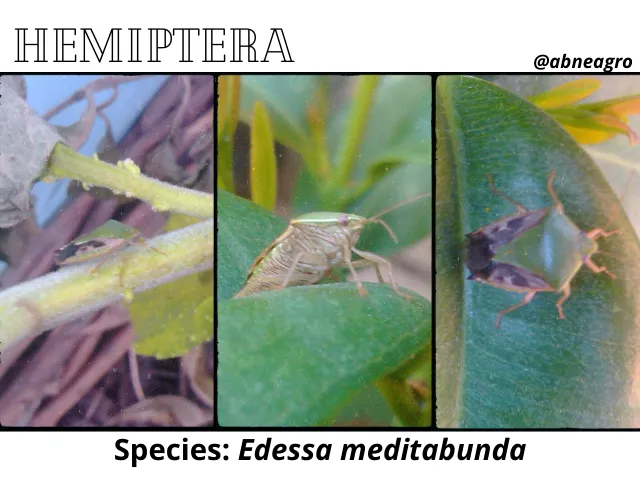
In this photographic material we find a popular insect of the pentatomidae family, which has more than 4,000 species spread over various terrestrial ecosystems of our incredible planet. The variety of this type of hemiptera is fascinating, since we can find them in different sizes and colors, characteristics that undoubtedly help them to camouflage themselves among the vegetation.
En este material fotográfico encontramos a un popular insecto de la familia de los pentatómidos, que cuenta con más de 4.000 especies repartidas por diversos ecosistemas terrestres de nuestro increíble planeta. La variedad de este tipo de hemípteros es fascinante, ya que podemos encontrarlos de diferentes tamaños y colores, características que sin duda les ayudan a camuflarse entre la vegetación.

Some time ago I did a post in Spanish about this family of insects in a more complete way; however, this morning after seeing some of these insects I decided to capture some photos and talk a little about these members of the order Hemiptera.
In Spanish speaking countries they are commonly known as "chinches apestosos", while in English speaking countries they are known as "stink bug or shield bug". The truth is that this type of organisms, when threatened, release a really unpleasant odor to scare away their aggressors, this is their defense mechanism, which has developed after years of evolution.
Hace un tiempo hice un post en español sobre esta familia de insectos de forma más completa; sin embargo, esta mañana después de ver algunos de estos insectos decidí capturar algunas fotos y hablar un poco sobre estos miembros del orden Hemiptera.
En los países de habla hispana se les conoce comúnmente como "chinches apestosos", mientras que en los países de habla inglesa se les conoce como "stink bug o shield bug". Lo cierto es que este tipo de organismos, cuando se ven amenazados, liberan un olor realmente desagradable para ahuyentar a sus agresores, este es su mecanismo de defensa, el cual ha ido desarrollando tras años de evolución.
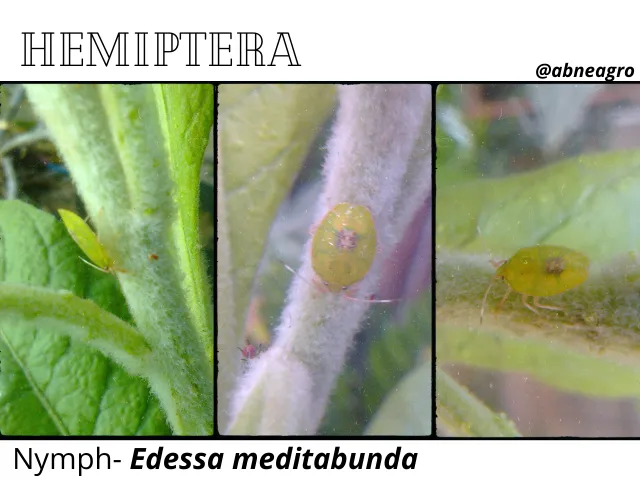
This type of arthropods is characterized by having a mouthparts designed to pierce the plant tissues of plants and suck their fluids; therefore, in very large populations they can progressively weaken the plant and condemn it to death. In this sense, it is necessary to constantly monitor the plants we have in our garden to prevent these insects from colonizing it in its entirety.
Este tipo de artrópodos se caracteriza por tener un aparato bucal diseñado para perforar los tejidos vegetales de las plantas y chupar sus fluidos; por ello, en poblaciones muy numerosas pueden debilitar progresivamente a la planta y condenarla a la muerte. En este sentido, es necesario vigilar constantemente las plantas que tenemos en nuestro jardín para evitar que estos insectos la colonicen en su totalidad.

Below we can see the development cycle of this species called Edessa meditabunda. It should be noted that these insects are incomplete metamorphosis, so they do not have caterpillars or chrysalis during their biological development; so like many arthropods, since they hatch from an egg become nymphs, then perform a cuticle molt progressively to become an adult ready to start a new life cycle.
A continuación podemos ver el ciclo de desarrollo de esta especie llamada Edessa meditabunda. Cabe destacar que estos insectos son de metamorfosis incompleta, por lo que no tienen orugas ni crisálidas durante su desarrollo biológico; por lo que al igual que muchos artrópodos, desde que nacen de un huevo se convierten en ninfas, para luego realizar una muda de cutícula progresivamente hasta convertirse en un adulto listo para iniciar un nuevo ciclo de vida.

Like all insects, this hemiptera has its body divided into 3 segments which are the head, thorax and abdomen. Also, in the photograph you can see some of the external parts of this invertebrate, drawing much attention to parts such as the scutellum, which has a strong resemblance to the typical shield used in ancient times by man. On the other hand, the entire body of this insect is covered with chitin, which gives it a rigid shell to protect itself from its hostile environment.
Como todos los insectos, este hemíptero tiene su cuerpo dividido en 3 segmentos que son la cabeza, el tórax y el abdomen. Además, en la fotografía se pueden ver algunas de las partes externas de este invertebrado, llamando mucho la atención partes como el escutelo, el cual tiene un gran parecido con el típico escudo utilizado en la antigüedad por el hombre. Por otro lado, todo el cuerpo de este insecto está cubierto de quitina, lo que le confiere una coraza rígida para protegerse de su entorno hostil.
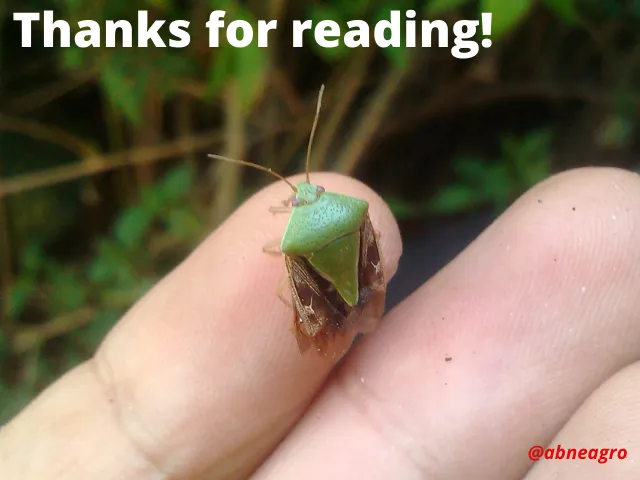
All photographs used in this publication belong to the author @abneagro and were taken with a ZTE caribe 4 mobile device and edited with the canva application.
Todas las fotografías utilizadas en esta publicación pertenecen al autor @abneagro y fueron tomadas con un dispositivo móvil ZTE caribe 4 y editadas con la aplicación canva.
this post was translated with the translator: https://www.deepl.com/es/translator

References and important information:

